Humans
The most populous species in the Nation of Materia call themselves humans, sometimes abbreviated to “man” or “mankind” although the term “man” normally refers to the male members of the species while females are normally referred to as “woman.” These are a mammalian species.
There are many physical variations and several spoken languages and micro-cultures among the species. The general shape and size of humans does not change very much between similarly aged individuals, each possessing two legs which are supported by flat “feet” connected with a 90-degree joint at the bottom, while at the top these legs which have a knee but generally are kept straight rather than bent, are connected vertically to their wide slightly rectangular torso, two arms which project outward from their shoulder with joints that move in most directions, and a roughly egg shaped head with a mouth that is flush to the surface of the face, lacking a muzzle. Nostrils are formed from a triangular center projection called a “nose.”
All humans are covered in a soft skin without any protective armor or scale. While lacking in very many pattern variations, the shade of pigment within this skin can differ between family groups. Some have light fur coverings of various shades, with the majority of this fur coating the very summit of their heads in a thick coat which is often shaped through brushing, cutting or braiding. Males are known to also grow this fur upon the front and bottom of their heads. Lacking a full-body fur covering like other mammals, humans most often cover themselves in clothing for protection and warmth.
Humans believe that they came to Materia from another continent called Aert, where their kind had established an advanced society. They have established themselves here and are responsible for growing the nation into what it is today. Their primary language which is far more complicated and detailed than that of the pelaon has become the national language of Materia and has been taught to many pelaons. Mankind is also responsible for improvements in food production, organization, health and daily comfort.
Beyond their advanced development prior to their arrival on our shores, humans also have great benefit in their physical versatility, possessing highly developed opposable thumbs on two limbs, more advanced than the thumbs on some pelaon species, which allow them to grasp objects with great precision as well as possessing exceptionally flexible bodies in healthy individuals. Their bodies also have a surprising capability for balance when trained, despite a form which in most cases remains vertically erect on two legs without the use of a tail or wings for stability.
Human lifespan is generally between 70 and 85 years.
Pelaons
The pelaons consist of a great variety of species which are native to the land of Materia. These are often divided into four categories: Plant Eaters, Meat Eaters, Flyers and Swimmers.
Each individual species retains some traditions and habits from the days before the coming of humans. Each also maintain unique dialects of the pelaon language. The central pelaon language is simpler than the common language of the humans and is easier for humans to understand than to pronounce, although some humans are able to speak pelaon (with an obvious thick accent).
Plant Eaters (also called herbivores by some) are the most populous within the communities of the Nation of Materia. Food supply for these members of society is abundant and many provide services as laborers due to their strong bodies and variety of body types and sizes which can serve various tasks that humans would otherwise need to construct tools or temporary structures in order to complete. Smaller species of plant eater are often hired for administrative tasks in cities.
Meat Eaters (also known to many as Carnivores) are often misunderstood and feared within society. Especially the larger members of the group who often find it difficult to gain the trust of others. This is due to the fact that many carnivores have preferred to live in the wilderness and occasionally hunt other pelaon as well as attacking communities and travelers on rare occasion. Despite this stigma, some areas of the nation have welcomed larger carnivores into their communities due to their strength both in laborious jobs and in protecting villages and cities from threats. Several members of this group are capable of developing great intellects and over the years several of Materia’s greatest thinkers and visionaries have been carnivores. This may be why the worshipped diety Ruuk is depicted as a tyrannosaurus.
Flyers are, as their name suggests, species capable of flying. Translations of early writings by the nation’s founders state that flyers are not actually pelaons however some have protested this claim and wish to be considered a part of the pelaon people. Despite this, it is rare for a flyer to become a member of a community. Instead they choose to live in groups along coastlines where they have access to their main food sources of fish and crustaceans and maintain their own governing hierarchy where they claim dominion over the air.
Swimmers, like flyers, do not integrate with the Nation of Materia very often and none have been known to speak the language made common by the humans, although some have learned enough to understand negotiations. Most communication with swimmers is performed by carnivores such as members of the Spinosaurus family who enjoy living in or near waterways and who are not afraid of the mysterious creatures. Specialized ships allow for communication by other species through body language. Swimmers are occasional threats to shipping and flyers as some can force their bodies out of the water with great force when attacking.
Pelaon lifespan ranges by species and body type. Smaller species generally live 40-60 years, medium species and larger meat eaters can live 60-70 years. Larger plant eaters can live up to 135 years.
Some Common Species of Pelaon
The writings of the founders of the Nation of Materia tell that the people they had encountered when humans first came to this land strongly resembled creatures the humans had already named. So close was this resemblance that they left a record of names for many of the individual families. Below is a gallery of only some of the species found across the landscape as well as some common traits of their kind.
Gallery of Pelaons

|
Ankylosaurus
|
| Dietary Group: Herbivore
|
Size Group: Large
|
Stance: Quadrupedal
|

|
APATOSAURUS
|
| Dietary Group: Herbivore
|
Size Group:
|
Stance: Quadrupedal
|

|
BARYONYX
|
| Dietary Group: Carnivore
|
Size Group: Large
|
Stance: Bipedal
|

|
BRACHIOSAURUS
|
| Dietary Group: Herbivore
|
Size Group: Very Large
|
Stance: Quadrupedal
|
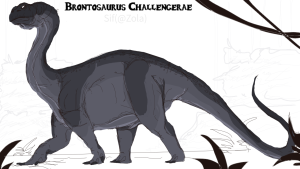
|
BRONTOSAURUS
|
| Dietary Group: Herbivore
|
Size Group: Very Large
|
Stance: Quadrupedal
|

|
CERATOSAURUS
|
| Dietary Group: Carnivore
|
Size Group: Medium
|
Stance: Bipedal
|

|
COAHUILACERATOPS
|
| Dietary Group: Omnivore
|
Size Group: Medium
|
Stance: Quadrupedal
|
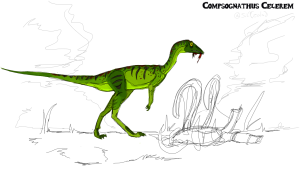
|
COMPSOGNATHUS
|
| Dietary Group: Omnivore
|
Size Group: Very Small
|
Stance: Bipedal
|

|
CORYTHOSAURUS
|
| Dietary Group: Herbivore
|
Size Group: Large
|
Stance: Quadrupedal
|

|
DEINONYCHUS
|
| Dietary Group: Carnivore
|
Size Group: Small
|
Stance: Bipedal
|

|
DILOPHOSAURUS
|
| Dietary Group: Carnivore
|
Size Group: Medium
|
Stance: Bipedal
|
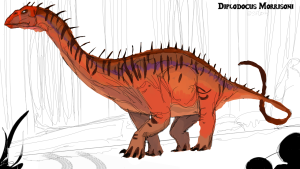
|
DIPLODOCUS
|
| Dietary Group: Herbivore
|
Size Group: Very Large
|
Stance: Quadrupedal
|
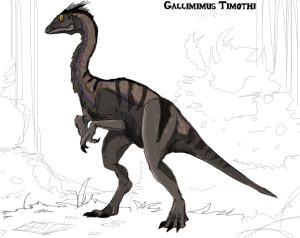
|
GALLIMIMUS
|
| Dietary Group: Omnivore
|
Size Group: Small
|
Stance: Bipedal
|

|
HERRERASAURUS
|
| Dietary Group: Carnivore
|
Size Group: Small
|
Stance: Bipedal
|

|
HYPSILOPHODON
|
| Dietary Group: Omnivore
|
Size Group: Very Small
|
Stance: Bipedal
|
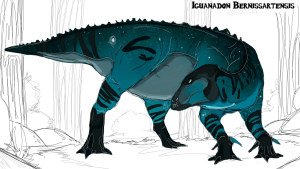
|
IGUANADON
|
| Dietary Group: Herbivore
|
Size Group: Large
|
Stance: Quadrupedal
|
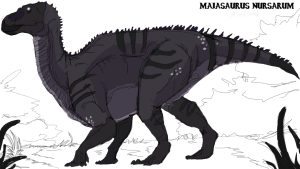
|
MAIASAURUS
|
| Dietary Group: Herbivore
|
Size Group: Medium
|
Stance: Quadrupedal
|
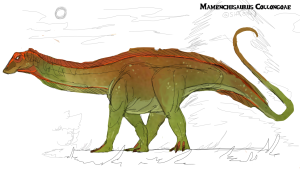
|
MAMENCHISAURUS
|
| Dietary Group: Herbivore
|
Size Group: Very Large
|
Stance: Quadrupedal
|
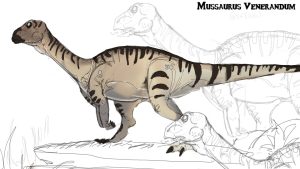
|
MUSSAURUS
|
| Dietary Group: Herbivore
|
Size Group: Very Small
|
Stance: Bipedal
|

|
MUTTABURRASAURUS
|
| Dietary Group: Herbivore
|
Size Group: Large
|
Stance: Bipedal
|

|
ORTHNIELOSAURUS
|
| Dietary Group: Omnivore
|
Size Group: Small
|
Stance: Bipedal
|

|
OVIRAPTOR
|
| Dietary Group: Omnivore
|
Size Group: Small
|
Stance: Bipedal
|
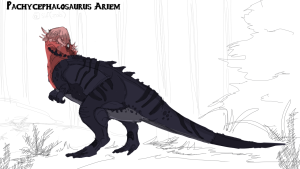
|
PACHYCEPHALOSAURUS
|
| Dietary Group: Herbivore
|
Size Group: Medium
|
Stance: Bipedal
|

|
PARASAURALOPHUS
|
| Dietary Group: Herbivore
|
Size Group: Medium
|
Stance: Bipedal
|

|
PTERANODON
|
| Dietary Group: Omnivore
|
Size Group: Large
|
Stance: Quadrupedal
|
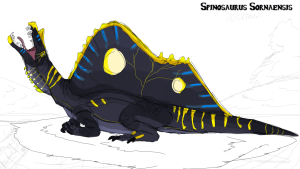
|
SPINOSAURUS
|
| Dietary Group: Carnivore
|
Size Group: Large
|
Stance: Quadrupedal
|

|
STEGOSAURUS
|
| Dietary Group: Herbivore
|
Size Group: Large
|
Stance: Quadrupedal
|
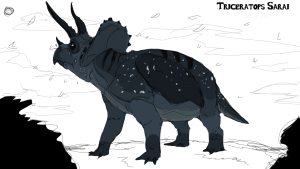
|
TRICERATOPS
|
| Dietary Group: Herbivore
|
Size Group: Medium
|
Stance: Quadrupedal
|

|
TYRANNOSAURUS
|
| Dietary Group: Carnivore
|
Size Group: Large
|
Stance: Bipedal
|

|
UTAHRAPTOR
|
| Dietary Group: Carnivore
|
Size Group: Small
|
Stance: Bipedal
|

|
VELOCIRAPTOR
|
| Dietary Group: Carnivore
|
Size Group: Small
|
Stance: Bipedal
|






























